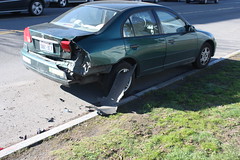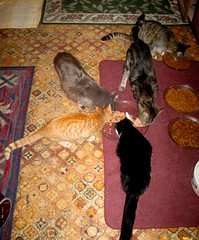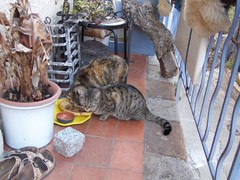Happy Halloween!
Monday, October 31st, 2011
see more Lolcats and funny pictures, and check out our Socially Awkward Penguin lolz!

see more Lolcats and funny pictures, and check out our Socially Awkward Penguin lolz!

see more Lolcats and funny pictures, and check out our Socially Awkward Penguin lolz!
 An important bill is being considered in Washington state which would help with spay/neuter costs for ferals and pets owned by low income people. Spay/Neuter is the best way to prevent overpopulation and cut down on the euthanasia rate of area shelters.
An important bill is being considered in Washington state which would help with spay/neuter costs for ferals and pets owned by low income people. Spay/Neuter is the best way to prevent overpopulation and cut down on the euthanasia rate of area shelters.
From Pamela Brumell of FCAT’s blog:
Senate Bill 5151/House Bill 1226: Saving Companion Animals’ Lives
The Washington State Legislature is now considering a bill that will help low-income pet owners of Washington State, save animals’ lives, and protect the general public at the same time. (Senate Bill 5151 / House Bill 1226. Currently in committee.)
What will Bill 5151/1226 will do if enacted?
This bill, if passed into law, will levy a small fee on cat and dog food at the rate of $0.025 (that’s 2 and a half cents) per pound. This would be $1.25 for a 50-pound bag of food. The monies collected will be put in a dedicated fund that will subsidize the costs of spaying and neutering of cats and dogs by participating veterinarians.
The program will benefit low-income Washingtonians wishing to spay or neuter their pets. Under the program, the cost will be $20 for dogs and $10 for cats. Proof-of-income requirements on pet owners will not be burdensome. Feral cats will be eligible for free spay and neutering.
Controlling the cat and dog population will help save taxpayers’ dollars by reducing the number of animals handled by local animal care and control agencies. One Washington shelter reported the average cost to handle an animal is $93. (Stray animal pickup and delivery to the shelter costs an additional $150 to $200.) For every animal that is not handled by animal control or shelters, the savings can be significant. For that reason alone, spay/neuter legislation will save Washington’s cities and counties millions of dollars in animal control costs and lower the number healthy, adoptable dogs and cat that are put to death over the long run.
Why is this bill so important for FCAT, FAF and other animal support groups?
Currently organizations that help animals (groups like FCAT and FAF) have to spend much of their already thinly spread resources on spaying and neutering costs. Even though we have vets in Seattle who are willing to give us a price break, we are still spending more time than we’d like carting individual animals to Seattle and back home. If 5151 passes, people in small towns will be able to take animals in by themselves, and this will free up FCAT and FAF to concentrate on larger colonies of feral cats anywhere in Washington.
Working with larger colonies of animals is where our resources are best used, and this is where more of them will be used if 5151 passes.
Please contact your local representatives and tell them to support 5151/1226. It’s an easy win for FCAT and FAF, a win for the people of Washington State, and a win for the animals.
Your representatives in the 34th District:
http://34dems.org/elected-legislative.htm
More info on SB5151 and what you can do to help:
http://savewashingtonpets.org/default.aspx
WS Blog member DP contributed to this post.
——-
comments by others:
“Similar programs have been established in other states, including Connecticut, Delaware, Illinois, Maine, New Hampshire, New Jersey, New York, and Vermont. The New Hampshire program was started in 1994 and in its first few years a 34-percent decrease in shelter admissions and a 75-percent decrease in euthanasia were reported.”
These animals and owners desperately need the help. In thinking about the cats that FAF has only recently helped:
All of these cats were unaltered because the owners simply could not afford the surgery fees of most veterinary clinics.
The purpose of the bill is to provide funding to assist low-income owners of cats and dogs to obtain affordable spay/neuter surgeries, and to provide for spay/neuter surgeries on feral and free-roaming cats. The bill does not make spay/neuter surgery mandatory.
There have been many stories about animals detecting cancer in people. Now scientists in Japan have trained a Labrador Retriever to sniff out bowel cancer in people. And the results…
95-98% accuracy – the same as if you undergo a colonoscopy! And without the trauma.
Here’s a link to the whole story, Dogs sniff out cancer in stool.
 One of the most frustrating problems in veterinary medicine is the chronically itchy dog or cat.
One of the most frustrating problems in veterinary medicine is the chronically itchy dog or cat.
So how can be get these guys so they are comfortable without getting stuck in the constant swing between steroids and antibiotics and without spending a small fortune?
Lets look at what is going on.
Why do dogs and cats itch?
Most itchy animals are allergic to something, be it food, plants in the environment or some other thing in their world such as dust, molds, or chemicals. The hard part is finding out what it is and even harder being able to do something about it. I have a number of dogs in my practice who are allergic to humans, dust, or grass which are all impossible to eliminate from their world.
Allergies produce inflammation in the body. In people this often presents as nasal congestion, in animals the most common way inflammation presents is through the skin.
So if they are allergic to something we can not eliminate this is an impossible problem, right?
No, there is hope.
Most animals and humans have some mild allergies or sensitivities. Most of the time we do not have any problems from them but if we are suddenly exposed to everything we are allergic to all at once or a very large amount of something we are allergic to we have a reaction. This is because we only have a reaction if the inflammation in our body reaches a certain threshold. Below that threshold nothing happens.
 But my dog is allergic to everything and always itchy. How do I possibly get his body to be below the allergy threshold so he doesn’t itch?
But my dog is allergic to everything and always itchy. How do I possibly get his body to be below the allergy threshold so he doesn’t itch?
Through using a diet that reduces the inflammation in his body! This means we need to feed a diet that is not processed, doesn’t have grain and takes a little longer to get absorbed and assimilated through the gut. A slow assimilation assures that there are not large spikes of nutrients and proteins that come into the body all at once and overtax the pancreas and liver creating inflammation.
Most commercial diets are too high in grains and carbohydrates and too processed for our companion animals. They create inflammation which overtaxes the body and leads to not just skin inflammation but also other inflammatory conditions such as colitis, pancreatitis, arthritis, inflammatory bowel disease, and ear infections.
In addition many of these diets are not high enough in protein causing a decreased blood reserve in the body in some of these animals which leads to the skin not being properly nourished and a cycle of chronic skin infections which produce more itching.
Commercial high grain processed diets often make our animals overweight. Fat reserves in the abdomen cause more inflammation in the body, by producing free radicals, adding to the problem.
So what are the steps needed to raise the allergy threshold and stop or eliminate the itch through diet?
Remember that resolution of itching can take a long time. Many animals, especially the ones with severe skin disease, take up to a year to get better.
Please also see part two Treating Severe Skin Disease Herbally.
 While we slept last night someone plowed into my loyal little green honda civic and totaled it. It’s been a great little car taking me to visit many of my animal clients over the years but as it is getting on in years it’s not worth the cost to fix it.
While we slept last night someone plowed into my loyal little green honda civic and totaled it. It’s been a great little car taking me to visit many of my animal clients over the years but as it is getting on in years it’s not worth the cost to fix it.
The person who hit it did leave a note and is insured but I will be in the market for a new car very soon.
 So what do I feed my cat? And how do I change their food?
So what do I feed my cat? And how do I change their food?
Anyone who has been owned by a cat knows that changing their food can be one of the hardest projects to undertake. Of course there are those cats who will eat anything but they are rare.
So how do you choose what to feed your cat and how do you find something they will eat?
Many of these rules you will recognize from my dog food article but cats are still cats and there are differences.
Here are some rules of thumb to follow with the kitties:
In cats this is especially important. Cats are true carnivores meaning they will die without meat. Because of this meat should be most of their diet. They absolutely should not be on a grain heavy diet. And cats should never be on a vegetarian diet.
I used to feed multiple brands of food to my own cats and switch flavors and brands daily. If your cat’s stomach allows it I recommend switching brands and varieties of food. This also helps if you do need to switch their food for some health reason later in life. Now I make my own raw food and switch ingredients between meat sources.
If I have missed the food you feed your cat add a comment and I will give you my opinion on it.
Cats have a funny relationship with water. They don’t drink much of it. In fact cats on dry food only are always in a slightly dehydrated state. This can lead to kidney failure, urinary tract problems and other health issues.
Dry food is cheapest and some people can not afford to feed anything but it. If dry food is all you can afford, adding a little water, chicken broth, wet food or good quality table scraps will help. There are also some animals that simply do not do well on anything but a dry food or will not eat anything but a dry food. If you feed only a dry diet make sure it is high quality and grain free.
High quality dry food with water or broth is better than low quality wet food.
 Our cats should be on a diet with a high protein content and should be eating almost all meat. I prefer cats to be on grain free diets. However, if they are feed a food with grain, meat should be at least 2/3 of the food.
Our cats should be on a diet with a high protein content and should be eating almost all meat. I prefer cats to be on grain free diets. However, if they are feed a food with grain, meat should be at least 2/3 of the food.
Animals with allergies, cancer, or epilepsy should absolutely be on a grain free diet. Many animals with chronic vomiting also do better on a grain free diet diet.
If you feed a food with grain, oats, barley, quinoa, and brown rice are ideal grain sources. Corn and wheat should not be feed to cats.
Healthy animals can be on a high quality diet with a little grain or without grain but I recommend dry food be grain free in cats.
Just say no to senior diets! Senior diets usually reduce the amount of protein and add more grain. Older cats do not need this! Avoid anything labeled a senior diet unless it is grain free.
Weight loss diets also reduce the protein and add more bulk in grain. This is not how you get a cat to loss weight. The best way to reduce weight on your overweight cat is to feed a high protein, no grain, raw, cooked or canned food only diet! Also know as the Catkins diet.
Evo and some of the other good quality foods now have weight loss, grain free diets with reduced fat, high protein and no grain. These are ok but avoid any weight loss diet with grain.
In the ideal world we would all have time to come home each day and cook for ourselves and our pets. However many people don’t have time to cook for themselves or their cats.
If you do have time to cook for your cats see my article Making crazy awesome homemade cat food.
If you can, start your cat on a raw diet or cook for them at home. There are also companies like Paw’s Cafe and Natural Pet Pantry that make homemade cat food. If you are against feeding raw food or your cat doesn’t tolerate it, raw foods can also be cooked. Crock pots and steamers are ideal for this. Although you can always throw it in a frying pan.
If you feed a raw diet make sure you use a commercial product that is frozen or if you make your own freeze it before using it to kill of any potential parasites.
In cats if you make a cooked food, you must add a supplement with taurine to it. Cats will die without taurine and while they get enough on raw food there is a debate on if they get enough from cooked. To be safe always add some to homemade cooked food. Commercial foods already add it.
In general the less proceeded the food the better. With raw being on the top, followed by cooked, canned and finally dry. But do what works for your household.
There are almost no overweight cats on raw diets. If your cat is overweight get them off the dry food.
< Any cat who has had urinary tract problems should be on a diet without dry food and the best way to prevent urinary problems is to avoid dry food.
Any cat who has had urinary tract problems should be on a diet without dry food and the best way to prevent urinary problems is to avoid dry food.
My own cats cats used to eat high quality canned food with a little dry Orijen overnight. I only added the dry after I discovered that my older cat needed a little at night or he would vomit up bile. My older cat has since passed away but I have a new girl who loves her “crunchies” so I still feed little dry in the evening along with homemade raw.
While I have a number of animals on homemade or raw diets, many of my clients feed their cats a mixture of high quality dry and wet because of convenience and cost.
If your animal has obvious allergies then this choice is made for you. If not, I am highly in favor of switching protein sources routinely. This reduces your animals chance of developing allergies and adds some variety to your their diet. Imagine if you had to eat the same thing over and over again. Boring!
Chinese medicine also has an energetic system for working with food. See my article The dance of life and the energetics of food for more information.
I do not recommend feeding pork to cats because of the way pigs are raised and the energetics that go along with that. Pork must never be eaten raw because of the diseases that pigs carry.
Tuna should be limited to one can a week. For foods with just a little tuna for favor use your own judgement. Tuna is high in heavy metals and can also lead to problems with vitamin B deficiency. The exception to this is when you are working with a picky cat who doesn’t like canned food. Many times starting with the tuna flavors will help switch them over and then you can add in other canned foods. Never feed straight human tuna because without the added vitamins you end up with vitamin B and E deficiencies.
No really, I know we as a veterinary community have told you they aren’t. But if you eat healthy food it is fine for your cat to have some. Just remember – no onions or chocolate.
For years the veterinary community has recommended low protein for cats in kidney failure. The new studies out however show that diets moderate in very high quality protein are best for these animals.
The best thing you can do for your cat in kidney failure is to keep them off the dry food. Feed high quality canned or home cooked with moderate protein. I do not recommend switching a cat with kidney failure to a raw diet if they are not already on one.
Avoid the low quality, low protein prescription kidney diets.
For more information on kidney failure and cats see my article Kidney failure in cats – how Chinese medicine and diet can help
 These foods are highly addictive to cats and it is very hard to get your cat off of them once they are on them.
These foods are highly addictive to cats and it is very hard to get your cat off of them once they are on them.
High in wheat, corn, soy, and salt and with animal by-product (euthanized cats and dogs with a little euthanasia solution in it) this is the last thing you want to feed your cat. Yuck!
However many cats love these foods. The high salt and artificial flavors make them highly addictive. Stay away from these at all costs!
Not only are they not good for your cat’s health but there also seems to be a higher rate of urinary tract disease in cats on these foods.
Cats can be hard to switch over to a new food. Sometimes nothing can seem more impossible. Here is a few things that can help.
I hope this information helps. Do the best you can with it and try to have fun! After all, you know your cat better than anyone else!
Helpful links
Dog Aware’s dog food page More information than you could ever use about dog food!. While this is a dog site much of the information on it is also relative to cats.
Born Free’s What’s Really In Pet Food A great article about pet food companies and processing.
Books about cat food and diet
Dr. Pitcairn’s New Complete Guide to Natural Health for Dogs and Cats
The Whole Pet Diet: Eight Weeks to Great Health for Dogs and Cats
The Natural Cat: The Comprehensive Guide to Optimum Care
Natural Nutrition for Cats: The Path to Purr-fect Health
Food Pets Die For: Shocking Facts About Pet Food
Not Fit for a Dog!: The Truth About Manufactured Dog and Cat Food
Home-Prepared Dog & Cat Diets: the Healthful Alternative
Update – Since writing this article I’ve gotten to participate in a great thread of questions about it on the West Seattle Blog. Please check out the post How to pick a good cat food where I also explain how to figure out the exact amount of food your cat needs.
 My business has been very busy since the new year and it’s been awhile since I’ve written a new post.
My business has been very busy since the new year and it’s been awhile since I’ve written a new post.
Right now I am in the middle of writing
and
Hopefully both will be up in the next couple weeks.
Stay tuned!
 I just read a very interesting article in the Atlantic, Does Vacccine Matter? While I admit this article is three pages long, it is also one of the most comprehensive articles written on why flu vaccines may not really be helping us. If you have the time I highly recommend reading this. As many of you know one of my primary veterinary interests is in infectious disease prevention and proper vaccination and that carries over to the human world at times
I just read a very interesting article in the Atlantic, Does Vacccine Matter? While I admit this article is three pages long, it is also one of the most comprehensive articles written on why flu vaccines may not really be helping us. If you have the time I highly recommend reading this. As many of you know one of my primary veterinary interests is in infectious disease prevention and proper vaccination and that carries over to the human world at times
Why is this an important topic?
For a few reasons.
Vaccinations have side effects and if a vaccine is not helping you it is probably hurting you. If we are doing more harm then good in vaccinating for the flu it would be good to know it.
Our government is banking on the fact that vaccination and antivirals will stop a deadly flu epidemic should be ever see one again like the flu epidemic of 1918. No true double blinded studies have been run on if the flu vaccine is helping us. Wouldn’t it be good to run these on a lesser strain of flu now so that we know if our vaccines are effective and can modify them if they are not?
In using anti-virals on non-deadly strains of flu we are creating resistance should we need them for more deadly strains. Anti-virals are also strong medicines with potential side effects including death. Once again we do not know how effective these drugs really are.
 Sorry about the slow posting. My business has been quite busy lately and I have had my hands full taking care of a couple of my older animal companions who are having some health issues.
Sorry about the slow posting. My business has been quite busy lately and I have had my hands full taking care of a couple of my older animal companions who are having some health issues.
In the meantime, I wanted to introduce you to one of the best blogs on kitten fostering. These folks are in the Seattle/Tacoma area and call themselves The Itty Bitty Kitty Committee and they have some of the most adorable photos I have seen.